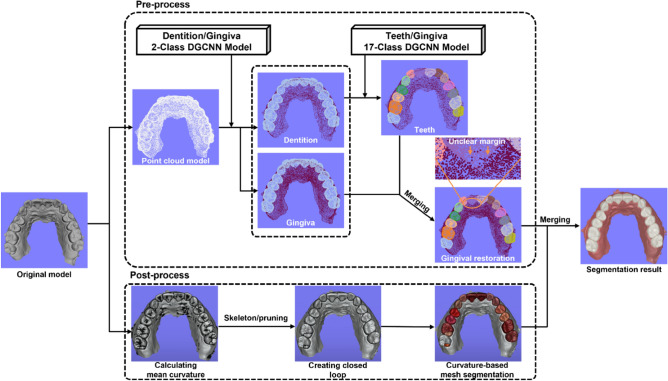Figure 1.
Schematic view of the deep learning process. After the original dental model was converted to a point cloud model, the dentition and the gingiva were segmented using the two-class DGCNN model. To increase the accuracy of semantic segmentation, we segmented individual teeth and gingiva using the seventeen-class DGCNN model with the vertices of the point cloud of the gingiva reduced to less than twice that of the tooth group. The gingival vertices were then restored. Since some of the segmentation results using DGCNN showed an unclear teeth margin, curvature-based mesh segmentation was used as post-processing to segment the teeth margin. The images of the digital dental model used in this figure were obtained using MeshLab (ver. 1.3.4 BETA, ISTI-CNR, Italy) and Unity Editor (ver.2020.3.23f1, Unity Technologies, USA) software.

